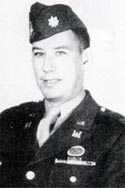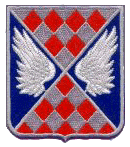|
|
. 139th AEB. AIRBORNE ENGINEER BATTALION |
|
 <-Lieutenant
Colonel Stanley Johnson
<-Lieutenant
Colonel Stanley Johnson
The 139th Airborne
Engineer Battalion was constituted on March 10, 1943 at
Camp Mackall,
North Carolina under the command of Lieutenant Colonel Stanley Johnson. The
139th was immediately assigned to the 17th Airborne.
It participated in Tennesee’s maneuvers in February 7, 1944 before being sent
first to Camp Forrest, Tennessee March 24, 1944, then he made one step at Camp
Myles Standish, Massachusetts August 14, 1944 before From Boston to August 20,
1944 to embark on a ship, the USS Wakefield towards England August 28, 1944.
Arriving in England, the 139th was sent to Camp Chisledon area where
stationed throughout the 17th Airborne. There, they continued training with
additional training and flight tactics and maneuvers at night. When Operation
Market Garden was began, the 17th Airborne Division was still in training, it
served therefore reserve unit.
![]() Belgium – Decembre 1944 –
Battle of the Bulge
Belgium – Decembre 1944 –
Battle of the Bulge
On December 16, 1944, the Germans launched an offensive through the Belgium Ardennes surprising the Allied Forces. The 17th Airborne remained in England. The 82nd and the 101st Airborne was at rest to Sisson, France were sent by trucks rushed to contain the German advance. Between 17 and 23 December, the 82nd Airborne blocked the German advance near St. Vith.
As the 101st Airborne was surrounded with the 7th Armored Division in Bastogne. To help reinforce Bastogne, the 17th Airborne was fielded. From 23 to 25 December, units of the 17th Airborne were flown to the Reims area in France. But meanwhile, the Patton’s 3th U.S. Army had broken the Bastogne’s siege. Arriving in France, the 17th Airborne was attached to Patton's army and were ordered to be close in at Mourmelon. It assured the defense along the Meuse River in an area ranging from Givet to Verdun until 1 January and was sent to Neufchateau, Belgium from there, walk in the snow, they went to Morhet raised for the 28th Infantry Division on January 3, 1945.
He established the Division HQ. During the next months, the 139th moved to Belgium several times sweeping roads for mines and locating and destroying boody traps laid by the Germans. On the 27th, the battalion took position near Bockholz, Luxembourg. February 11, 1945, the 139th returned to camp Chalons-sur-Marne, France with the rest of the 17th Division, then return to Belgium in March 21, 1945 to prepare for the assault across the Rhine.
![]() Germany – March 1945 – Operation Varsity
Germany – March 1945 – Operation Varsity
In early February, the situation on the front helped to assess exactly where and when the 2nd British Army would be ready to force a pass to cross the Rhine. It was determined that the crossing would coincide with an airborne operation by XVIII Airborne Corps.
The sector selected for the assault happened near Wesel, North of the Ruhr. The operation was to begin March 24, 1945. The airborne operation was the last of the Second World War. The task is returned to the 17th Airborne Division. This will be the first and last operation for the 139th AEB.
The mission for the 139th glider landing in the north of Wesel in the Landing Zone S (LZ S), which is a large flat area where the Issel River and Issel Canal come together and protect the right flank division. While General Eisenhower watched the operation from a church tower on the west side of the Rhine, the aircraft carrying the 139th AEB had the misfortune of flying over a high concentration of German Flak gun.
Two-thirds of the C-47’s were damaged or destroyed by fire. The pilot remained in formation. The German gunners then placed their guns in direct fire. Finally, men outflanked the enemy positions which signed the success of the operation.
The 139th AEB served as army of occupation in Germany from 2 May to 19 June, 1945. Then, the battalion was sent to Neufchateau, Belgium to gather. It was back in the United States on 14 September 1945 and was deactivated at Camp Myles Standish, Massachusetts on the same year.

